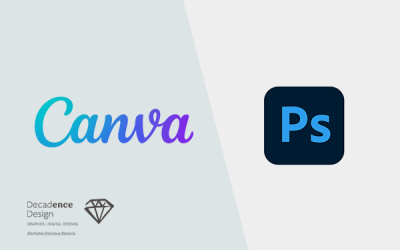In the world of Design, it is important to open up our worldview and expand the variety of our work. By embracing diversity and inclusion in design, we can shed our one-dimensional worldview and expand the multiple perspectives or experiences that we can express to our audience. Interconnectedness in all its forms, including technology, multiculturalism and globalism, make diversity and inclusion more relevant than ever in design.
Content and visuals are some of the most important aspects of marketing. With a more open worldview, perspective and empathy would push the efficacy of these aspects.
When you take a look at your Design team. Is it diverse? Do you welcome diverse perspectives or are you simply hiring someone with a similar appearance, education or professional background?
Firstly, as a Design team there must be diversity. Statistically, approximately 86% of professional designers are Caucasian. This represents only small strides since the 1990 AIGA Journal article “Equal Opportunities: Minorities in Graphic Design” by Michele Vernon-Chesley.
Having diverse backgrounds would allow different perspectives when teams are brainstorming. These would introduce a more nuanced quality to your designs when your team pitches in to enhance designs that might be restricted to one-dimension if your team is mainly from a similar demographic.
For example, the Decadence design team is made up of designers from all over the world, with employees from Singapore to the Philippines to Russia. By having team members with great contrast in attitudes and backgrounds, this eliminates the appearance bias or stereotypes that might appear in our work.
When we become more tolerant and aware of our own biases, we can help others identify their own and start developing tactics to both handle and mitigate them. If we do not approach it with a flexible mindset when designing, positive change gets crippled when our reactions reinforce those biased behaviours.
For example, the age-old stereotype in fashion-related design is the tendency for designers to paint fairer skin and a slimmer body type in a better light than realistic body types.
As Fabricio Teixeira proclaims, “If you want creative quality, you need creative diversity.”
Companies should aim to eliminate these stereotypes by having at the very least a diverse, well rounded team. Making the stretch and enhancing your team’s penchant for diverse design would help your team improve.
Need constant pushes for Design Diversity? Whether it’s assigning a rep to advocate and doctor your designs, or engaging with brand ambassadors that resonate and connect with these ideals, having someone on the ball is always great to enact real change and action at the drawing boards. In fact, influencer engagement to represent your brand can also lend a new lens to the designs your company produces when these influencers promote them.
How accessible is your design? An interesting take on diversity in design could be how accessible your design is. Different types of audience that look at your finished product might require different means to access it. For example, someone who is on the go would naturally have a different reception to someone casually scrolling through and finding your product at home.
Even a visually impaired client might require text-to-speech functions to access your design. What are you doing to increase the types of audience able to access and engage with your design? This is a commonly overlooked aspect of diversity in Design.
Inclusive and diverse design is built on the principles of web accessibility as well. Strive to make all users feel welcome and included in the design. By offering multiple solutions and means to engage with the product would increase the diversity of the audience’s impression of your works.
Widen the scope of people who access your product and suit their individual needs and reap the benefits of embracing inclusive design. A plethora of choices can boost your chances of meeting the unique needs and abilities of each of your users while maintaining the quality of your designs.
New trends in Design should also not be ignored. A design team which digs their heels in and refuses to conform might be seen to embrace traditional design. However as time passes this would only serve to render your designs obsolete.
What may be seen as timeless would be reduced to stagnant and outdated. A good habit to have is to be active as a company on social media and watch out for the ebb and flow of trends and apply them to your designs. The global target market is a rich treasure trove of variety waiting to be explored. With a constant flux of inspiration for designers to take advantage of, it would be unwise to ignore this source completely.
Embracing diversity in Design is never easy. However, the fruit of your labour would be evident as your find more engagement and results from your work, be it in branding, web or graphic design or marketing collaterals.





